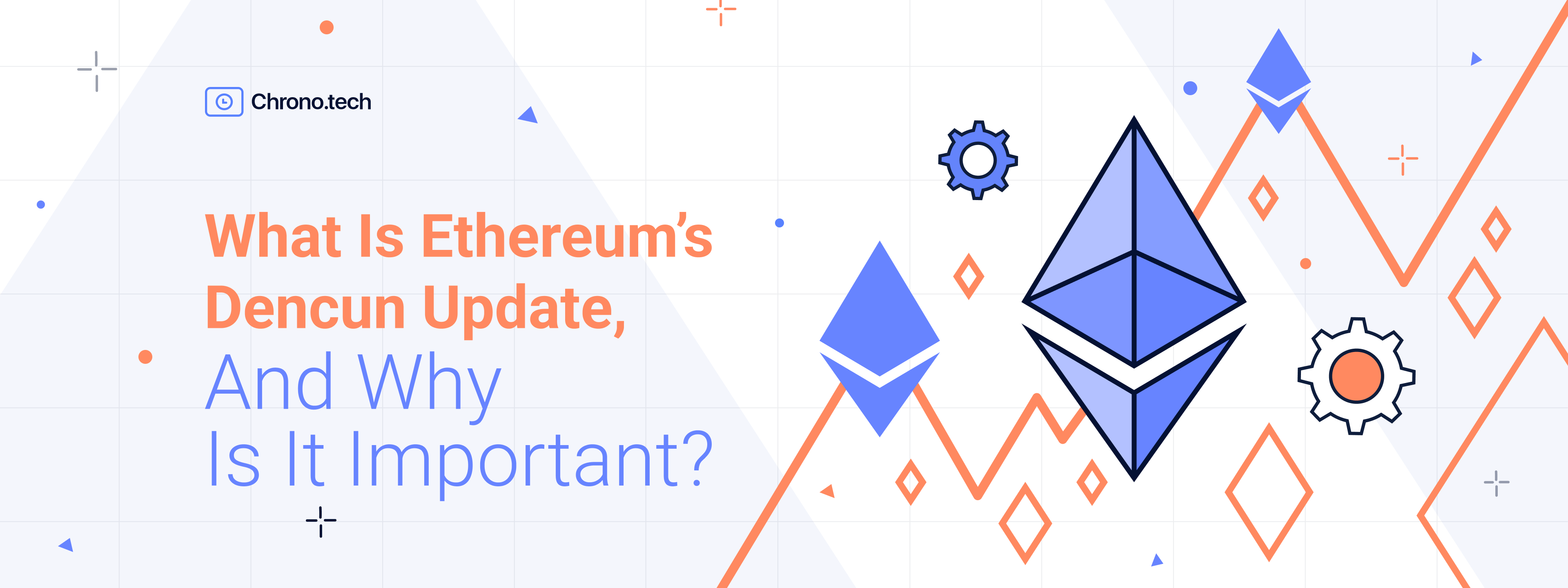As confidence returns to the crypto world, so has on-chain activity. Ethereum has soared past $3,000 and is trading at levels not seen in almost two years. At the same time, that interest comes with a major downside. Gas fees, which for so many months were down in single figures, are now regularly hitting the 50-100 gwei mark, or even higher. Transferring tokens can easily cost $30, or $50. Complex contract interactions like a token swap on a DEX, or minting an NFT? Far more. Small transactions are once again utterly uneconomical.
Ethereum has suffered from scaling problems ever since its earliest days. CryptoKitties, a pioneering and hugely popular NFT game, brought the network to a standstill in December 2017. Since then, Layer-2 solutions like Optimism and Arbitrum have taken some of the pressure off mainnet, but it’s not enough. Fast forward six-plus years, and gas fees are still too high when demand rises. But Ethereum’s developers have a plan, and Dencun is the next stage of that.
Overview
Back in 2017, Ethereum mainnet was all there was in the Ethereum ecosystem. The launch of the first Layer-2 (L2) platforms was a huge step forwards, buying time for developers to work on further scaling solutions by moving activity off L1.
L2 platforms work by bundling together large numbers of transactions, then posting cryptographic proof on L1. This means they are secured by Ethereum mainnet, and drive activity to it, but can be potentially hundreds of times more efficient, allowing large volumes of fast and low-cost transactions.
Even L2s, however, sometimes struggle to cope. They will be part of the long-term solution for Ethereum (rather than a stopgap, which is how they were originally viewed), but Ethereum needs some changes to make that happen.
Dencun is a set of updates to Ethereum that will reduce gas fees and make L2s more cost-effective. Developers have now successfully deployed the Dencun upgrade on all of Ethereum’s testnets. It will go live on mainnet on March 13.
The most important of the features introduced with Dencun is EIP-4844, also known as "proto-danksharding".
Introducing Blobs
The most important change that’s being introduced in EIP-4844 is Binary Large Objects,or ‘Blobs’, which are designed to replace calldata.
In Ethereum, calldata is the name given to a read-only area of memory used for storing data used as the input of smart contract calls. This input data includes a digital signature and any arguments (information provided by the caller for the contract). Calldata is therefore vital, since it allows smart contracts to access and read the data they need to execute functions without changing it, thereby ensuring that the original transaction data is immutable. Calldata costs less in gas terms than accessing information held in storage, another area of memory that is both read and write.
EIP-4844 introduces a new transaction type known as a ‘blob-carrying transaction’. Blobs are extremely large, compared to the size of the average Ethereum block, being roughly 125 kB. Blobs offer a far cheaper way of storing information than calldata, and will make data available temporarily, before being deleted after two weeks. Blobs will not compete for block space in the same way that calldata does, and have the potential to reduce the costs of that data by 80-90%.
One of the key aims of EIP-4844 is to encourage the move to L2 solutions. With the ability to bundle large numbers of transactions at a much cheaper rate, Ethereum’s developers estimate that blobs will help drive L2 transactions below $0.01. This will be a major breakthrough in itself, and will buy further time for devs to continue building out longer-term solutions, including sharding.
Rollups And Appchains
Dencun is not a full solution in itself, but it paves the way for huge increases in capacity. Blobs allow for more efficient data storage. What is then needed is ways to use that effectively. Rollups and Appchains are two ways in which the capacity of the ecosystem will be expanded over the long term.
Appchains (application-specific blockchains) are standalone EVM-compatible chains that typically host a single, specific use case. They are built on Ethereum (or on an L2 chain), but specialised for their purpose (like a gaming chain), and can be maintained by a distinct group of validators with their own consensus rules. This allows them to process very large numbers of transactions, but unlike sidechains, they are still ultimately secured by L1. Immutable zkEVM is one example of an appchain.
Rollups are another approach. These process transactions off-chain, but bundle (roll up) a large number into a single transaction and post them back to mainnet, again enjoying the security of Ethereum L1. Rollups are generally not as customizable as Appchains, but may have other relative advantages, such as their ease of deployment.
One of the key issues with L2s is the length of time it can take to verify data posted back to mainnet. There can be a period of up to a week when the validity of transactions can be challenged. Blobs exist for long enough to ensure that these security requirements are met, but are then deleted, ensuring they don’t take up space on the blockchain forever – and requiring high gas to pay for that space.
Conclusion
Ethereum’s dev team and community have committed to the idea of building a blockchain ecosystem that is not only decentralised, but secure and high-capacity at the same time: the notorious ‘blockchain trilemma’. This is no easy feat, but Dencun – arguably the most important update since the Merge – takes a decisive step in that direction.


